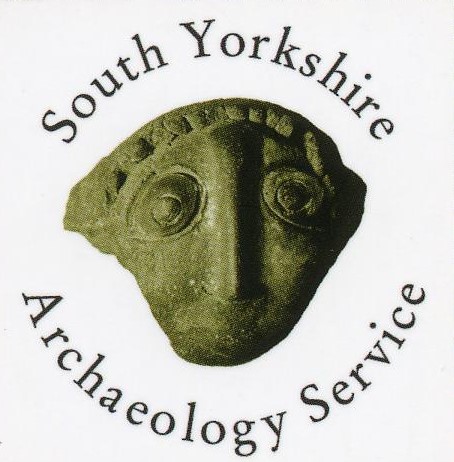Tinsley Carnegie Library
Location/Address
46 Bawtry Road, Tinsley, S9 1UD
Type
Description
The former Carnegie Library, Tinsley, opened in June 1905 and served as a branch library until 1985 (see https://www.readingsheffield.co.uk/tinsleys-carnegie-library/ ), when the library moved to another building in Tinsley. The building was more recently used as the Roundabout Centre but is now unused and boarded up. The interior couldn't be assessed.
At the time of its construction, Tinsley was a village within Rotherham - it was transferred to the city of Sheffield in 1912 (see https://www.sheffield.gov.uk/content/dam/sheffield/docs/libraries-and-archives/archives-and-local-studies/local-area-history/Tinsley%20community%20history%20(PDF)%20%20v1-0.pdf ). Picture Sheffield has photos of Sir William Holland MP laying the corner stone for the new library in 1904 (see https://www.picturesheffield.com/frontend.php?keywords=Ref_No_increment;EQUALS;s22599&pos=25&action=zoom&id=25064 ). The inscription of this stone is still legible 'This stone was laid by Sir William Holland MP July 9th 1904'. Holland was MP for Rotherham from 1899 - 1910, after which he was raised to the peerage as Baron Rotherham of Broughton (see https://en.wikipedia.org/wiki/William_Holland,_1st_Baron_Rotherham ).
The 'readingsheffield' website (link above) describes "the story of how a village decided to open a public library. And how an English aristocrat, an American millionaire and two unlikely-sounding architects helped make it possible" - the English aristocrat was local landowner, the 7th Earl Fitzwilliam, who gave the site; the American millionaire was Andrew Carnegie, who offered Tinsley Parish Council £1,500 for the erection of a Free Public Library; and the architects were E S Holmes and A F Watson, Sheffield architects and surveyors who were in partnership 1893-1906 (see https://www.readingsheffield.co.uk/tinsleys-carnegie-library-2/ ). The 'readingsheffield' site includes illustrations of Holmes and Watson's proposed plans and elevations, from the originals in Sheffield Archives and notes "Holmes and Watson kept things relatively simple, with only slight changes between the drawings and the finished building. Brick is the main material, and the building is double-fronted, with a central porch and a charming steeple or ‘fleche’ on the roof. The windows are large, letting in as much light as possible for readers. The porch bears a fine inscription thanking the donors, Andrew Carnegie and Earl Fitzwilliam. Inside the fittings were mahoghany – where it showed, like the fine entrance doors – and stained pine – where it did not. The building is in keeping with the surrounding houses, with good proportions, and the small corner site is used effectively." The inscription over the porch is a brick relief that reads 'The funds for this building were given by Andrew Carnegie Esquire and the site by the Earl Fitzwilliam' - to the right of the inscription is a stylised date '1904' and to the left initials, probably 'AC'.
Statement of Significance
Asset type
Carnegie Library BuildingAge
The building dates to 1904/1905 and is of merit, being an example of cultural infrastructure that reflects a particular period of investment in library provision. The Historic England listing guide on Culture & Entertainment Buildings (2017) notes p.3 that "An 1850 Act permitted local authorities to build libraries... A further Libraries Act in 1892 made it easier for urban authorities to raise funds, and thenceforth libraries were built in unprecedented numbers." Local authority provision was boosted by funding from Andrew Carnegie (1835 -1919). Marking the 100th anniversary of Carnegie's death, the Carnegie UK Trust noted "When the first Carnegie library was opened in 1883, only 23% of the UK population had access to a public library service, and by 1915, this had risen to 60%, largely thanks to Carnegie’s contribution" (see https://www.cilips.org.uk/building-on-carnegies-public-library-legacy-carnegie-uk-trust/ ).Rarity
Carnegie provided funding for 9 libraries within South Yorkshire, of which 2 stand within the City of Sheffield - the Tinsley Library and Walkley Public Library, also dated 1904, which is listed Grade II (NHLE 1247394).Architectural and Artistic Interest
The building was designed by the Sheffield firm Holmes and Watson - Edward Holmes and Adam Francis Watson. The 'readingsheffield' site says "Their work included industrial, commercial and public buildings in Sheffield [including]... schools like Pomona Street, Western Road and Carter Knowle Road (all still in use today); the ornate Midland Bank branch on the High Street" and goes on to say "Edward Holmes (1859-1921) and Adam Francis Watson (1859-1932) were well established, individually and as a partnership, in Sheffield. Watson was born in Northants, but lived in Sheffield for most of his life, working first as assistant to the leading architect, Matthew Ellison Hadfield. Holmes was a Sheffield boy, the son of Samuel Furness Holmes, the town’s first Borough Surveyor. They were both keen supporters of the Sheffield Society of Architects and Surveyors, founded in 1887, with Holmes becoming President in 1905-06 and Watson from 1913 to 1920."Group Value
The building has a historic relationship with the adjoining residential properties to the south on Bawtry Road and to the school site further south.Historic Interest
The library building reflects the philanthropy of Andrew Carnegie and the desire and determination of Tinsley Parish Council to secure funding for a free Public Library for Tinsley. It helps to tell the story of social change - Carnegie funding was critical to supporting the public library movement in the UK. Andrew Carnegie is quoted as saying "there was no use to which money could be applied so productive... as the founding of a public library in a community" (see https://www.carnegie.org/interactives/foundersstory/#!/ )Archaeological Interest
Surviving historic fabric - plus contemporary information/accounts concerning its construction and use at Sheffield Archives and records in local papers.Landmark Status
The building is a well-known landmark . The Star newspaper 3-12-2020 ran a story on the local campaign to save the building and bring it back into use (see https://www.thestar.co.uk/news/politics/council/sheffield-council-says-it-does-not-have-budget-save-historic-library-building-risk-disposal-3056790 ); a petition with 127 signatories had been presented to the City Council, including the request to 'Study options for external funding to renovate and in the cases of the last two, reopen and restaff, Central, Tinsley Carnegie and Walkley libraries' (see https://democracy.sheffield.gov.uk/mgEPetitionDisplay.aspx?Id=10208 )Images and Documents
Date Listed
15 Aug 2022
Last Updated
16 Jun 2022
Comments and Feedback
Do you have any questions or more information about this record?








